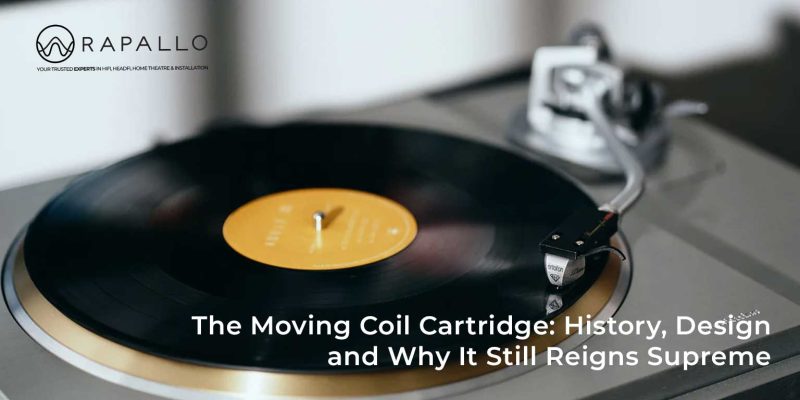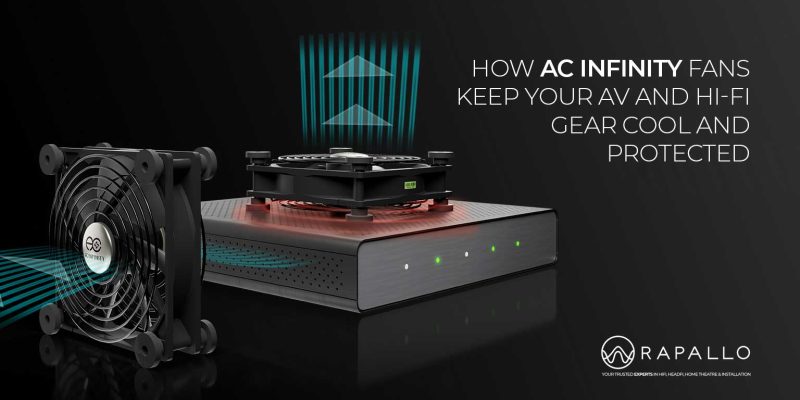
Ben reviews the Topping DX7 DAC and balanced amplifier
Estimated reading time: 8 minutes
Ben reviews the Topping DX7 DAC and balanced amplifier.
Rapallo’s Ben is on a budget… still. He may be no longer a student, but a full-fledged Rapallo employee… but until further notice, he remains on a budget when it comes to the purchase of his AV gear. And like so many audiophiles that have to work with limited funds, he is a big fan of Topping DACs and amplifiers.
Topping released their new DX7 DAC and balanced headphone amplifier at the end of last year, and as soon as it landed in the Rapallo quarters, it went on a trip home with Ben for some vigorous testing.
Long gone are the days of cheap and nasty AV products from China. Sure, you can still find them without too much of an effort, but one is no long the same as the other by default. As a matter of fact, you will find that even many high end AV products find their place of production in that part of the world. Topping is no different. Located in Guangzhou and extremely proud of their R&D department, Topping has developed quite a reputation in affordable but excellent quality amplifiers, headphone amplifiers, DACs and media players.
So does the DX7, a DAC and amplifier in a single aluminum shell, live up to that reputation?
These are the findings of a 20-something young man with a passion for AV.
The Finish – Ben reviews the Topping DX7 DAC and balanced amplifier
He may be a young lad on a budget, but as a Rapallo employee Ben gets exposed to high end AV products just as much as the more budget ones. He knows what’s out there and what can be expected.
And just like the rest of us, Ben is of the idea that first impressions mean a lot. Luckily, he thinks that Topping is getting that in the feel and design of the box alone: Sitting in a slab of thick, black foam in 3 cut-out sections is the DX7 DAC & Amp, remote control USB cable and power cable, along with a User’s manual and warranty card. Also included is a 3.5 mm to 6.35 mm adapter.
The design is simple and elegant. The DX7 itself has some weight to it too (just under 2 kg) and so does the remote. According to our Ben the words ‘Premium’ and ‘Refined’ come to mind. We’re sure off to a good start. Even the clicking volume knob is made of aluminum. No plastic in sight!
That same earlier mentioned remote has all the buttons for power, mute, source selection, Volume up and down, choosing between Headphone out, line Out or Both which come in 3 separate buttons. A frequency roll off, an IIR bandwidth button and a dimmer (only two brightness settings: Bright and half brightness).
‘Personally, I think it’s nice having a remote with all the controls at your fingertips. A total of 13 buttons may seem like a lot for a DAC/Headphone amp but this means less fiddles before you get where you want to be. All I can say is that it’s a seriously impressive remote. ‘
Let’s talk connections. The In’s and out’s of the DX7.
The DX7 has all the connections you need in terms of Digital inputs: Coax, Optical, USB and even an AES3 input that you may see in pro-audio sources.
But it’s the outs that are a bit surprising to Ben: The DX7 has a digital coax output, that’s right: OUT put. You can make the DX7 convert the USB, AES and Optical digital inputs to a digital Coax output.
You may ask why? It allows you to convert a USB, AES or Optical source to digital Coax. Which in turn would send to another external DAC, or Integrated amplifier (with only a digital Coax input) or powered bookshelf speakers for that matter.
So let’s get playing. How user-friendly is all this?
This is where Ben really is getting his AV playing boots on.
Ben’s own budget stereo set-up these days compromises of a simple Topping TP60 amplifier, a pair of passive Jamo C601 mini bookshelf speakers, his Macbook Air and his PS4 serve as a source and he uses the the portable black Dragonfly as a DAC. As for headphones, Ben uses the Bloc and Roc Galvanize S2 Headphones, which were a gift. They are a good combo of light-weight but good build and pleasant tonality for their price.
Ben uses his Spotify account for streaming (320kbps Spotify Streaming), 16/44.1 FLAC/WAV, and some Hi-res 192kHz recordings.
And then there is the Topping DX7 to be tested.
The DX7 gives you the plenty of flexibility and option: pressing the “headphones + line out” button has the DX7 acting as both DAC and headphone amplifier, presumably using line out when headphones are not plugged in; the “headphones” button should only leverage the amplifier stage, excluding the DAC; the “line out” button, conversely, makes it only work as a DAC so you can use any other amplifier or powered speakers.
It’s interesting to point out that the Balanced XLR4 headphone input can drive up to 600 Ohm headphones, and up to 300 Ohms over the 6.3mm jack. So the DX7 can definitely handle power for the higher end headphones. It sure leaves plenty of room for Ben’s future audiophile dreams.
In terms of the USB input you don’t need a driver if your are using a Mac, like Ben does; it is simply plug and play. But if you’re a Windows user, you can get the driver from the Topping website. They even give you in-depth guides on how to configure the popular audio players JRiver and Foobar, AND even downloadable plugins for the respective players. Ben says he hates it when he has to search all over forums to get a little plug-in and setting right. I’m sure you do too.
Nice attention to detail, Topping, I say.
The Topping DX7 put to the test: Ben reviews the Topping DX7 DAC and balanced amplifier
‘There is definitely greater clarity when I moved from my Macbook’s headphone output to the DAC within the DX7 even when listening to Spotify.’ On came John Mayer’s ‘Heartbreak Warfare’. Ben was amazed how real and centred his voice sounded. Subsequently he cranked up the volume with some “Daft-Punk” to test how the DX7 handled heavy bass. Ben’s description was that it sounded incredible clear and clean; even at high volumes. On top of that, he was very pleased to not detect any hisses or background noise with the DX7, it simply does the job.
Ben has a fascination with DAC chips. The DX7 houses a dual DAC chip configuration meaning both left and right channels have their own dedicate chips, which are the ESS Sabre Hifi chips (ES9038Q2M). The dual chips really improved the channel separation giving a greater detailed sound stage.
As soon as Ben plugged in his Bloc and Roc headphones (Frequency: 20Hz-20kHz; Sensitivity: 115dB and Impedance: 32Ω) he was a fan: ‘The impression I get of the DX7 is transparent, detailed and balanced that faithfully reproduces sound and lets your accompanying equipment do any colouring. I found vocals sounded more real and more pin-point in the centre of the listening position. The bass was cleaner, I could define and intentionally “pick it out” from the rest of the instruments on most recordings. In fact I think this DAC really allows you to better identify any instruments in recordings. I really notice this when I did the A/B test. Switching back to the headphone jack, everything becomes muddled.’
And on went play-time: ‘The FIR (PCM filter) setting allows you to control the filter of the minimum phase. Meaning slow roll off to fast roll off modes. The IIR setting is for DSD filtering and you can choose a bandwidth filter of 47.44k to 70k.
For the audio enthusiasts this DAC can decode all the way up 32bit/768kHz at PCM and it is DSD capable through the USB input. So it’s safe to say the DX7 covers all bases in terms of audio decoding. So if you have the files, this DAC will decode it with no issues.’
Then Ben had a go at playing game audio and streaming Spotify simultaneously through the PS4. ‘I found that the optical input was excellent to use with my PS4. The DX7 has no hiccups at all. Previously, to get audio from the PS4 to my Jamo Speakers I needed to use the headphone jack out of the computer monitor screen. After a few minutes of getting the music playing, I noticed the music gets quite a lot of distortion. The reason for this is because I was using the cheap DAC chip within the computer monitor. The fact that the DAC in the screen has to decode audio from the game sound on top of the Spotify music, it simply cannot handle that amount of signal!’
No need to say that Ben is in budget audio heaven.
So all in a nutshell: Ben reviews the Topping DX7 DAC and balanced amplifier
The DX7 is everything you want in a Desktop DAC and headphone amplifier. The build quality, from the remote to the feel of the front dial makes the user experience that much more pleasant. It’s got all the connections you need to future proof your system. The Dual DAC configuration really improves the sound stage, and clarity.
Listening to Spotify, I am not an audiophile or critical listener that can afford high end-AV gear at this stage in my life, but I still found plenty of audio improvements over my Macbook’s headphone out and current Audioquest Dragonfly Black.
If you are looking to improve your current desktop audio experience or have reference headphones this might the upgrade you are looking for. At the retail price of NZD830 the DX7 is one of the cheaper units to offer balanced XLR output. It is an excellent and affordable solution for anyone wanting to dip their feet in the waters of balanced sound or just looking for a very capable DAC/AMP solution for years to come.
- Our Guide to Buying a CD Player
- The Moving Coil Cartridge: History, Design, and Why It Still Reigns Supreme
- How AC Infinity Fans Keep Your AV and Hi-Fi Gear Cool and Protected
- Chip DACs vs. Ladder DACs
- Are Blu-ray Players Still Worth It in 2025?
- Understanding Banana Plugs: Are They Worth Using for Your Speakers?
- The Ultimate Guide to Projection Screen Fabrics
- Record Cleaning Machines and How to Use Them.
- The Ultimate Guide to Integrated Amplifiers








